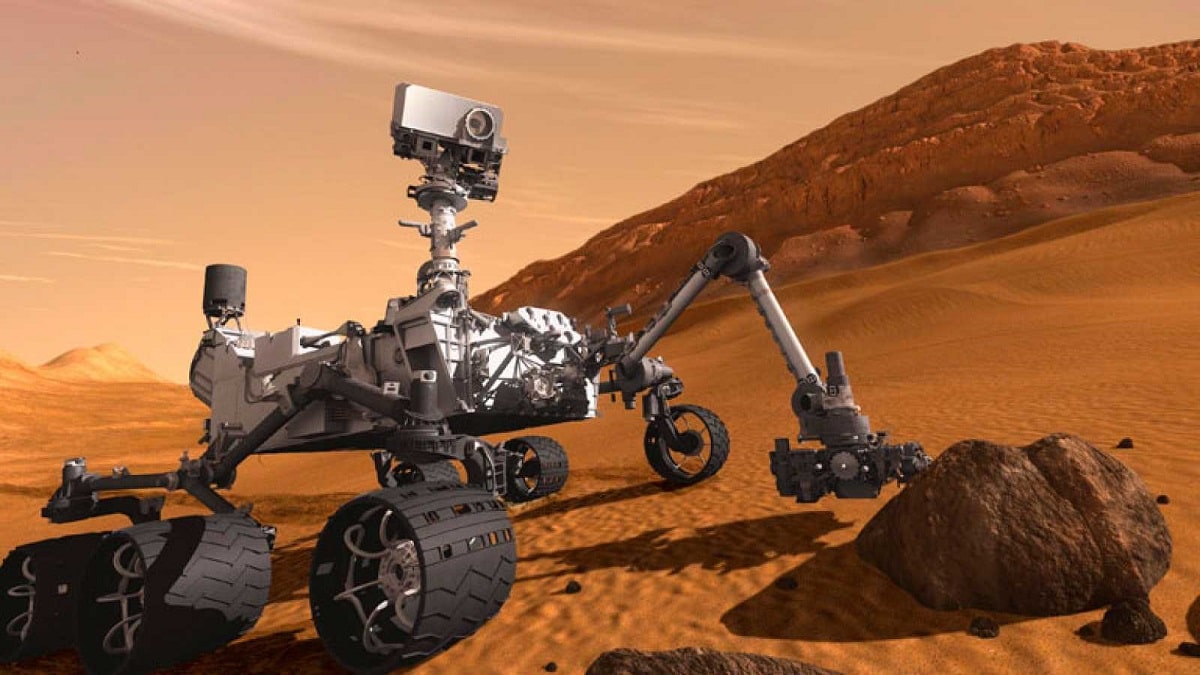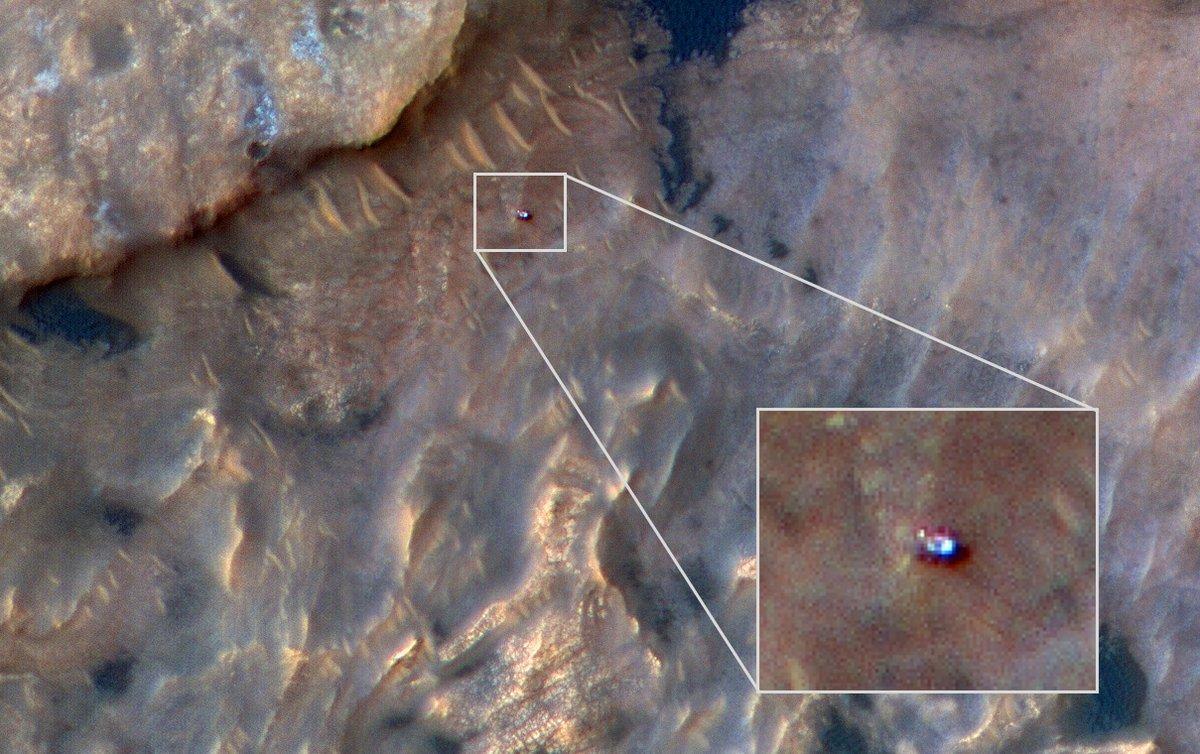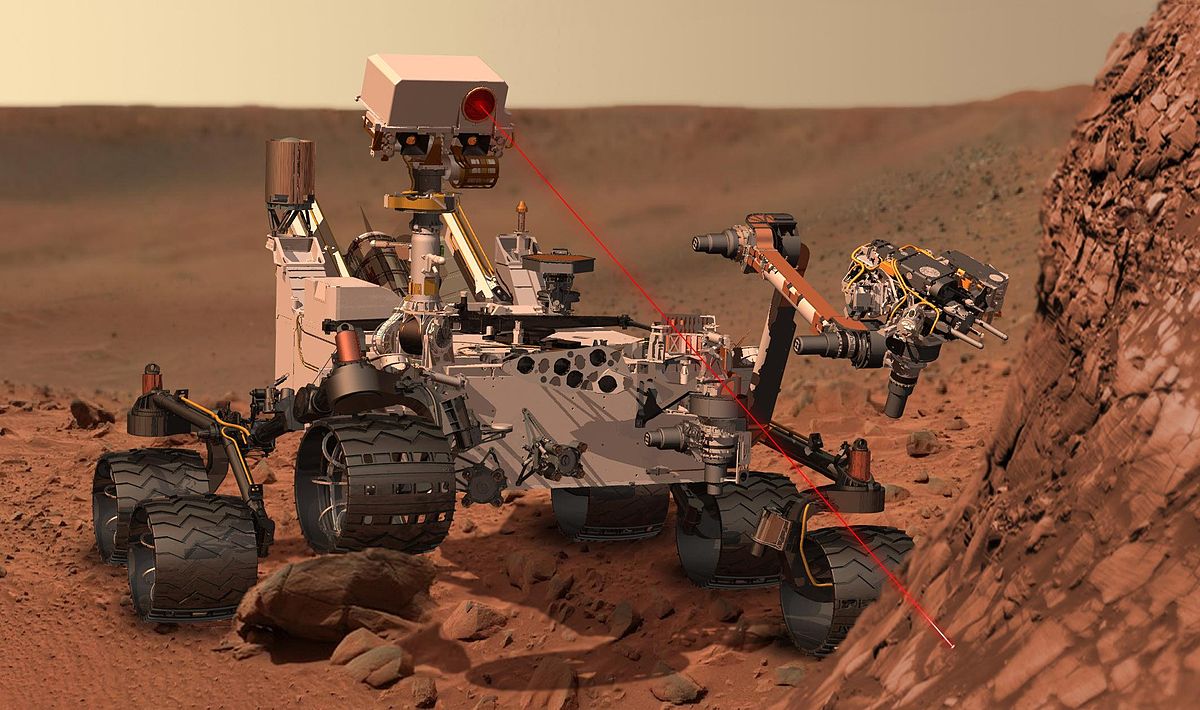
El Curiosity rover is a space machine has studied the sky of the planet Mars, capturing images of bright clouds and a drifting moon. The rover's radiation sensors allow scientists to measure the amount of high-energy radiation future astronauts will be exposed to on the Martian surface, helping NASA figure out how to keep them safe.
In this article we are going to tell you everything you need to know about the Curiosity rover, its features and its discoveries.
Key features

The Curiosity rover is a space machine that has been exploring the surface of Mars since its landing in August 2012. Designed and built by NASA, this robotic vehicle is part of the Mars Science Laboratory mission (MSL) and has a number of impressive features that make it one of the most advanced rovers to date.
It is quite large being about the size of a small car. It is about 2,9 meters long, 2,7 meters wide and 2,2 meters high. Its total weight is around 900 kilograms. It is equipped with six wheels, each of which has a diameter of 50 centimeters, which allows it to move agilely and navigate the difficult terrain of Mars.
One of the most notable features of the Curiosity rover is its power system. It features a radioisotope thermoelectric generator (RTG), which uses the heat generated by the decay of plutonium-238 to produce electricity. This power source allows the rover to operate for long periods of time, even in extremely cold Martian conditions.
It also has a variety of sophisticated scientific instruments on board. It has a sample analysis system called SAM (Sample Analysis at Mars), which is capable of studying the chemical composition of Martian rocks and soil. It has a laser spectrometer that can vaporize small portions of material to analyze its elemental composition. In addition, it has built-in high-resolution cameras that capture panoramic and detailed images of the Martian surface.
It has an articulated robotic arm and can extend up to a length of 2,1 meters. At the end of the arm are a number of tools, including a drill, brush, and camera, that allow you to take samples and conduct research directly on the Martian surface.
Their communication system is impressive. It uses high-gain antennas to transmit data over NASA's communication network, allowing scientists on Earth to receive valuable information about Mars in real time.
Discoveries of the Curiosity rover

Among the discoveries of the Curiosity rover on Mars we have to determined that liquid water, along with the chemicals and nutrients necessary to support life, have existed in Gale Crater for at least tens of millions of years. The crater once contained a lake, which has grown and decreased in size over time. Each upper layer of Mount Sharp documents a more recent Martian environment.
Now the intrepid rover is traversing a canyon that marks a transition to a new area that is believed to have formed when the water dried up, leaving behind salty minerals known as sulfates.
"We are seeing evidence of dramatic changes in the ancient Martian climate," said Curiosity project scientist Ashwin Vasavada of NASA's Jet Propulsion Laboratory in southern California. "The question now is whether the habitable conditions that Curiosity has encountered so far have persisted through these changes. Are they gone forever or have they come and gone for millions of years?
The Curiosity rover has made incredible progress on the mountain. In 2015, the team captured a "postcard" image of a distant mountain. A small speck in that image is the Curiosity-sized rock dubbed "Ilha Novo Destino," nearly seven years after the rover passed it last month on its way to the sulfate field.
The team plans to explore the sulfate-rich region in the coming years. In it, they consider targets such as the Gediz Vallis channel, which may have formed during a flood late in Mount Sharp's history, and large cemented fractures that show the impact of groundwater on the mountain.
How they keep the Curiosity rover running

People ask what the Curiosity rover's secret is to maintaining this active lifestyle at age 10. The answer is with a team of hundreds of dedicated engineers who work both at JPL and remotely from home.
This team catalogs every crack in the wheels, tests every line of computer code before it's transmitted into space, and drills endless rock samples at the Jet Propulsion Laboratory's Mars Yard to ensure it can remain safely on the red planet.
"Once you land on Mars, everything you do is predicated on the fact that there's no one in 100 million miles who can fix it," said Andy Mishkin, interim Curiosity program manager at JPL. "It's all about making smart use of what's on the rover."
For example, the drilling process has been modified several times since it landed. At one point, the drill was out of commission for over a year as engineers adapted it to look more like a hand drill. Recently, a set of braking mechanisms that allow the arm to move or stay in place stopped working. Although the arm has been running as usual with a spare set it had, the team also learned to drill holes more carefully to protect the new brakes.
To minimize damage to the wheels, engineers kept an eye out for hazards, such as the steep terrain they recently discovered, and developed a traction control algorithm to help.
The team took a similar approach to managing the rover's slowly dwindling power. It has long-lasting nuclear power batteries instead of solar panels. As the plutonium atoms in the batteries decay, they generate heat, which the rover converts into electricity. The rover won't be able to do the same amount of activity in a day as it did in its first year, as atoms gradually disintegrate.
Mishkin said the team is continuing to find out how much power the rover uses each day, and has already discovered what activities can be performed in parallel to optimize the available energy of the rover. Through careful planning and engineering skills, the team is looking forward to the many years of exploration that lie ahead for this intrepid rover.
I hope that with this information you can learn more about the Curiosity rover and its characteristics.